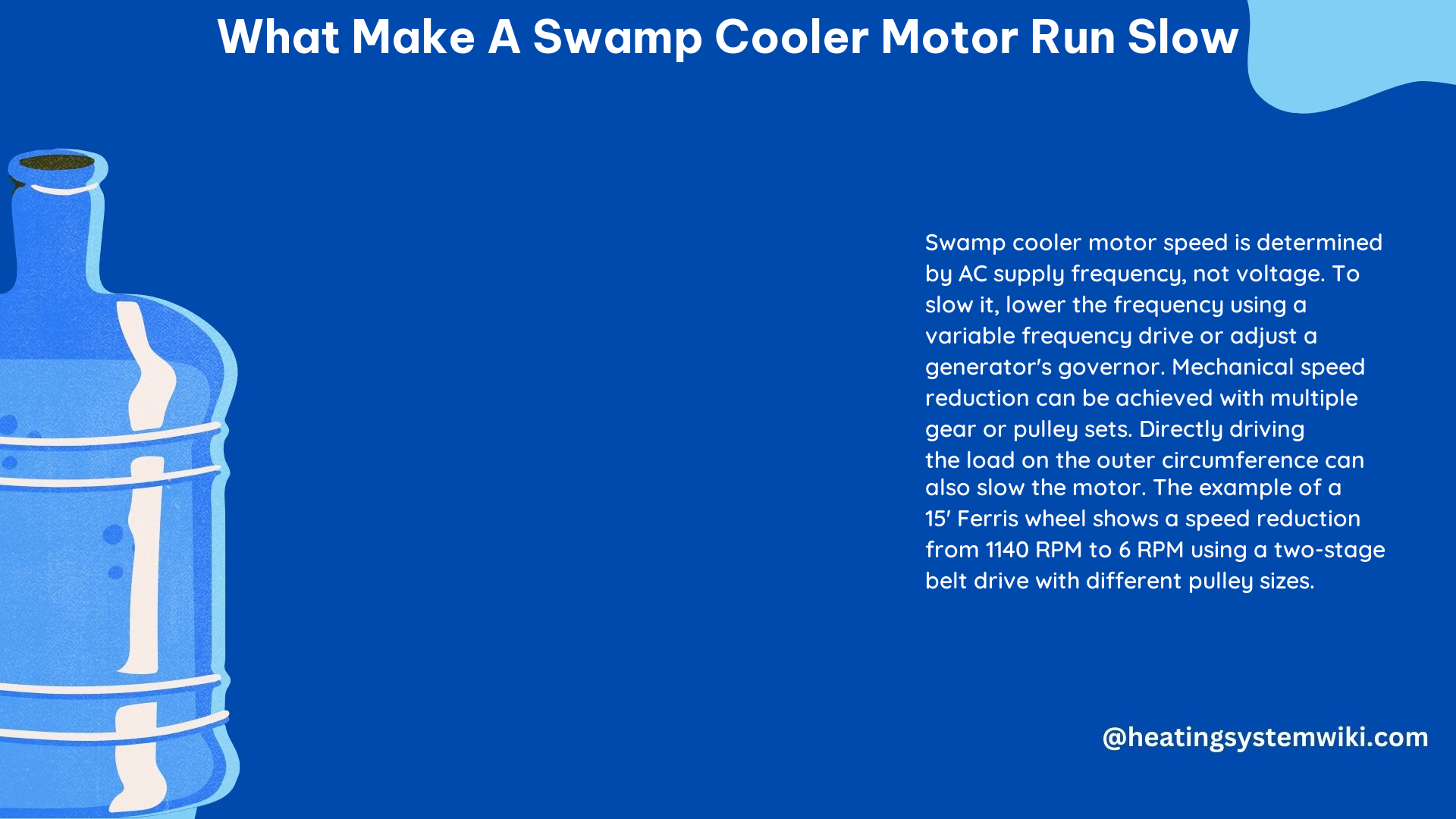A swamp cooler, also known as an evaporative cooler, is a popular and energy-efficient way to cool homes, especially in dry climates. However, when the motor that powers the fan in a swamp cooler starts to run slow, it can significantly impact the cooling performance and efficiency of the system. In this comprehensive guide, we’ll explore the various factors that can cause a swamp cooler motor to run slow and provide detailed steps to diagnose and address the issue.
Faulty Capacitor: The Heart of the Motor
The capacitor is a crucial component in the swamp cooler motor’s operation, as it helps the motor start and run efficiently. If the capacitor is faulty, it can cause the motor to run slow or even fail to start altogether. To diagnose a faulty capacitor, you’ll need to use a multimeter to test its capacitance and resistance. The capacitance should match the rating specified on the capacitor, typically ranging from 3 to 30 microfarads (μF) for swamp cooler motors. If the capacitance is significantly lower or higher than the rated value, the capacitor needs to be replaced.
Worn-out Bearings: The Friction Factor

Over time, the bearings that support the motor’s shaft can become worn out, leading to increased friction and a slow-running motor. This can be identified by listening for any grinding or scraping noises coming from the motor. To inspect the bearings, you’ll need to disassemble the motor and visually inspect the bearings for signs of wear, such as pitting, scoring, or excessive play in the shaft. If the bearings are worn out, they should be replaced with new ones of the same size and specifications.
Damaged Motor Windings: The Electrical Culprit
The motor windings, which are the copper coils that generate the magnetic field to power the motor, can become damaged over time due to heat, moisture, or electrical surges. This can cause the motor to run slow or even overheat. To check the motor windings, use a multimeter to measure the resistance between the different winding phases. The resistance should be within the range specified by the motor manufacturer. If the resistance is too high or too low, the motor windings are likely damaged, and the motor will need to be replaced.
Pulley and Belt Issues: The Mechanical Factors
A loose or worn-out belt can cause the motor to run slow, as it may slip and not transmit the full power to the fan. Similarly, a damaged or misaligned pulley can also contribute to a slow-running motor. To address these issues, first, check the belt for signs of wear, such as cracks or fraying. If the belt is worn, replace it with a new one of the same size and type. Next, inspect the pulley for any damage or misalignment. If the pulley is damaged, replace it, and if it’s misaligned, adjust its position to ensure proper belt tension and alignment.
Mineral Buildup on Cooler Pads: The Airflow Restriction
Mineral deposits and debris can accumulate on the cooler pads over time, restricting the airflow and causing the motor to work harder and run slow. To address this issue, regularly clean the cooler pads using a mild detergent and water. This will help ensure that the motor doesn’t have to work as hard to move the air through the cooler, improving its efficiency and speed.
Slowing Down the Motor Electronically: The Variable Frequency Drive
If you need to intentionally slow down the swamp cooler motor, such as for a Halloween prop or other application, you can use a variable frequency drive (VFD). A VFD is an electronic device that can adjust the frequency of the AC power supplied to the motor, effectively controlling its speed. This method requires some electrical knowledge and expertise, as you’ll need to properly size and configure the VFD to work with your specific swamp cooler motor.
Mechanical Speed Reduction: The Gear and Pulley Approach
Alternatively, you can use a mechanical approach to slow down the swamp cooler motor, such as by using a combination of gears or pulleys. This can be particularly useful for applications like Halloween props, where you need to achieve a specific, slower speed. One example is a belt-drive system with multiple stages of reduction, where each stage of pulleys and belts further reduces the motor’s speed to the desired level.
In conclusion, a swamp cooler motor can run slow due to a variety of factors, including a faulty capacitor, worn-out bearings, damaged motor windings, pulley and belt issues, and mineral buildup on the cooler pads. By understanding these potential causes and following the diagnostic steps outlined in this guide, you can effectively identify and address the issue, ensuring your swamp cooler operates at peak efficiency.
